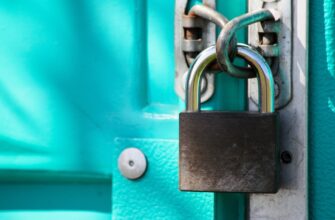Guarding funds in cold storage is a critical step for cryptocurrency users who want to protect their assets from hacking, theft, and unauthorized access. Cold storage refers to storing cryptocurrency offline in a secure wallet, which significantly reduces the risk of cyberattacks compared to hot wallets. This article provides a step-by-step guide to setting up and maintaining cold storage, along with security tips and frequently asked questions to help you safeguard your digital assets.
### Step-by-Step Guide to Setting Up Cold Storage
1. **Choose a Cold Storage Wallet**
Select a reputable cold storage wallet that is designed for long-term security. Options include hardware wallets (like Ledger or Trezor) and paper wallets. Hardware wallets are generally more secure because they store private keys offline, while paper wallets require physical security.
2. **Generate a Private Key**
Create a unique private key for your wallet. This key is essential for accessing and transferring funds. Use a trusted wallet provider to generate the key, and ensure it is stored securely.
3. **Securely Store the Private Key**
The private key is the foundation of your cold storage. Store it in a safe, physical location, such as a safe or a secure vault. Avoid sharing it with anyone, and consider using a password-protected container to add an extra layer of security.
4. **Set Up the Wallet**
Once you have the private key, use it to set up your cold storage wallet. This process typically involves connecting the wallet to a computer or device and confirming the setup through a secure interface.
5. **Transfer Funds to Cold Storage**
After setting up your wallet, transfer your cryptocurrency to the cold storage address. This ensures your funds are securely stored offline. Double-check the destination address to avoid accidental transfers to the wrong wallet.
### Security Tips for Cold Storage
– **Use Hardware Wallets**: Hardware wallets are the most secure option for cold storage. They store private keys offline and require physical interaction to access funds.
– **Enable Two-Factor Authentication (2FA)**: Activate 2FA on your wallet to add an extra layer of security. This typically involves a password and a unique code sent to your mobile device.
– **Backup Your Wallet**: Regularly backup your cold storage wallet to a secure location. This ensures you can recover your funds in case of device failure or loss.
– **Avoid Public Wi-Fi**: Never access your cold storage wallet on public Wi-Fi networks, as these are vulnerable to hacking.
– **Use Strong Passwords**: Create complex passwords for your wallet and any associated accounts to prevent unauthorized access.
### Frequently Asked Questions (FAQ)
**Q: What is the difference between a hardware wallet and a paper wallet?**
A: A hardware wallet is a physical device that stores private keys offline, while a paper wallet is a printed document containing the private key and public address. Hardware wallets are generally more secure and user-friendly.
**Q: How do I backup my cold storage wallet?**
A: Backup your wallet by creating a copy of the private key and storing it in a secure, physical location. You can also use a backup service provided by your wallet provider.
**Q: What happens if I lose my cold storage wallet?**
A: If you lose your cold storage wallet, you may lose access to your funds unless you have a backup. Always store backups in a safe place and consider using a recovery phrase to regenerate your wallet if needed.
**Q: Can I use cold storage for multiple cryptocurrencies?**
A: Yes, many cold storage wallets support multiple cryptocurrencies. Choose a wallet that is compatible with the cryptocurrencies you want to store.
**Q: Is cold storage completely secure?**
A: While cold storage is highly secure, no system is 100% foolproof. Always follow best practices, such as using strong passwords and avoiding public Wi-Fi, to maximize security.
By following these steps and adhering to security best practices, you can effectively guard your funds in cold storage and protect your cryptocurrency from potential threats. Regularly review your security measures and stay updated on the latest trends in cryptocurrency security to ensure your assets remain safe.








